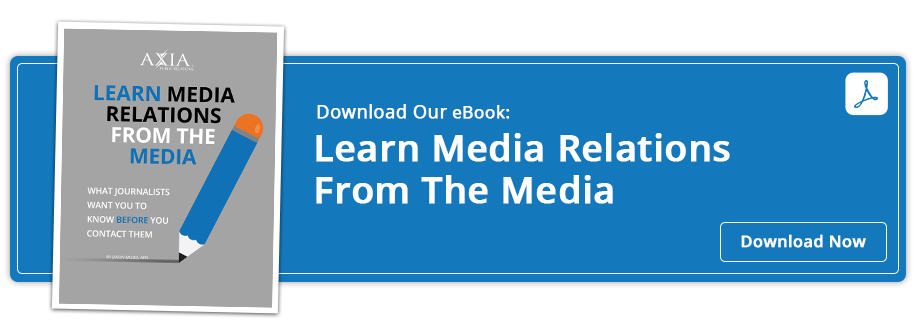 Writing and submitting a bylined article can offer many benefits for you and your company – it doesn’t have to be a daunting task. When you’re an expert in your field and within your company, there are other people and even other companies that will benefit from your expert knowledge, which is the first step in recognizing that you should create and write a bylined article for submission. Here are the top nine things you need to know before submitting articles for publication.
Writing and submitting a bylined article can offer many benefits for you and your company – it doesn’t have to be a daunting task. When you’re an expert in your field and within your company, there are other people and even other companies that will benefit from your expert knowledge, which is the first step in recognizing that you should create and write a bylined article for submission. Here are the top nine things you need to know before submitting articles for publication.
Audio: Listen to this article.
- Outlets
When looking for outlets to pitch to, it’s important to connect to those with readers that fit your company’s audience. For example, smaller outlets may be a better market for your company if the niche readership fits your target audience. If your company specializes in woodworking, don’t discount something like Woodworking Today because it isn’t USA Today – you’re reaching the people you need to reach. Find outlets that will honor a nonexclusive agreement. This will allow you to still submit one-off articles to other outlets who may not have the same readership.
- Submission
Submit a new article every six to eight weeks. This allows you to avoid inundating the outlet and its readers with content from your company. It’s the same with sharing news and news releases with the media – not every day is newsworthy day. Some outlets and editors will accept multiple stories at one time and will schedule them out as they need them – depending on how many other individuals have submitted a bylined piece, how much space the editor needs to fill, or the timeliness of the topic.
- Length
Ensure your article is less than 800 to 1,000 words. This tends to be a sweet spot with readers – not too long and not too short. Articles that are too short tend to only be 100 to 300 words and may not give much actual insight. Many articles published in a newsletter are 300 to 800 words. Readers have a short attention span; they want to be able to read something in a short amount of time while still finishing the article feeling they gained new insight and knowledge.
- Voice
Write the article in the second person. Using the pronoun “you” to address your audience allows the reader to immerse themselves into the story and have the opportunity to realize how your company or services may positively impact them.
Write in an active voice rather than a passive voice. When writing in active voice, then the subject does the action of the verb in a sentence, while passive voice tends to use some form of “to be” in the sentence.
- Topic
Finding a topic that appeals to your target audience and to a variety of readers is important. Two ways to find content for an article are to look at your blog posts and to know what’s evergreen in your company or industry.
- Evergreen. Ensure your topics are fresh and relevant. If you write about the new year, then editors will only publish those articles in December and January – you might get lucky and have an article published in November. The more general the overall topic is, the more likely it will get published.
- Blog posts. If your company writes or publishes blog posts, then look at which ones were the most popular. Utilize them as a basic outline, change the voice to second person, and lengthen it for an article.
- Headings
Using headings, subheadings, and bullet points will help break up the copy. This can help to re-engage the reader (who has a short attention span) and to allow them to scroll and find the topic or paragraph that best appeals to them and their needs.
- Quote
As you write your article, don’t quote competitors or other industry authorities. Instead, quote industry research, academic institutions, associations, historical figures, government agencies, and other neutral sources. You want to be the thought leader and expert who readers turn to when they need expertise.
- Utilize the author box
This box is used as an author's bio, and you should include a call to action. You can include your website in this box – remember though, the information in this box should be 50 words or less. If you want to be a speaker or you want to be the accountant of record for companies with more than 100 employees, then state that as part of your call to action.
- Highlight
When your articles have been published online, ask your web team to add them to (or create) an “In the Media” page to your company website. Share the article on your personal LinkedIn as well as your company’s LinkedIn – this should be your first avenue for sharing and highlighting the publication. You can also utilize Facebook and Twitter, as well.
Remember that each outlet may vary in its overall requirements; however, you can use this guide as a baseline for submission. And if one outlet doesn’t seem interested in a particular article, it may still work well for a different outlet with a few tweaks. This is especially true if there’s a difference in word count or content focus. Submitting bylined articles for our clients and helping them navigate through the process is a journey that we enjoy being part of. Let us be part of your team, and download our PR Fact Sheet and reach out to us to be one of our clients today.
 Clients love Marjorie’s work ethic, speed and diligence. She has worked with Axia Public Relations since October 2011. Marjorie graduated from Rockhurst University with a Bachelor of Arts in communication and loves to cheer for her hometown Kansas City Royals. Learn more about Marjorie.
Clients love Marjorie’s work ethic, speed and diligence. She has worked with Axia Public Relations since October 2011. Marjorie graduated from Rockhurst University with a Bachelor of Arts in communication and loves to cheer for her hometown Kansas City Royals. Learn more about Marjorie.
Photo by cottonbro studio
Topics: earned media, news media


Comment on This Article